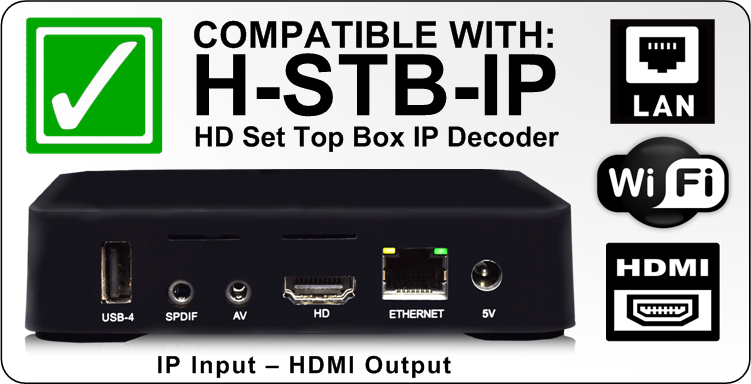Answer: The H-2SDI-2HDMI-ENC generates four different multicast IP addresses,
for example: CH 1 - 224.2.2.2, port 2234.
To decode the multicast IP address to the HDMI video output, you would
need to log in to each of the H-IP-HDMI devices and set the desired
multicast IP address.
This unit has an NMS PORT for setup and monitoring, as well as a DATA
port for IP Video Stream INPUT.
The network should have a DHCP server so that IP addresses can be
assigned to each decoder. Alternatively, it is even better to manually
assign static IP addresses to each one of them.
When you log in to the H-IP-HDMI, you can add a multicast IP stream
for decoding. For example, for channel #1 from the encoder, use
udp://224.2.2.2:2234.
----------------Reply 2
From the screenshot you sent me, it appears that nothing is connected to the encoder as the bit rate is showing 0 Mbps, so no stream is generated.
Regarding your question about "where the channel would be assigned to control the TVs," it is important to note that the encoder cannot control set-top boxes (STBs).
The encoder continuously sends four streams, and it is the responsibility of the decoder to tune and display the correct channel.
To control the IP decoder, you would need to connect to each one of them via NMS (Network Management System) and set the appropriate multicast IP address.
Please find attached some documentation for the encoder's IP settings and also for IP to HDMI.
---------Reply 3
Please connect the video source to the encoder.
Once you have a lock, it will start broadcasting a multicast IP stream
(streams outputted via the DATA port).
Please check the stream IP; it should be 224.2.2.2 port 2234. for ch 1
Connect the IP decoder's DATA port to the same network as the encoder.
Log in to the decoder's NMS and enter udp://224.2.2.2:2234 as a stream address .
The decoder should output HDMI video to the TV.

 ES
ES













